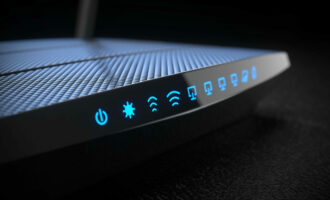
Insights
What’s the Difference Between Broadband and Wi-Fi?
Picture the scene: you’re having a movie night, the popcorn is ready, you sit down to stream your title of choice, and… the dreaded buffering circle appears. But how can you tell what’s causing your slow internet — is it your broadband or your Wi-Fi? And what’s the difference between them anyway?
We’re delving into the complex arena of the world wide web, how it works, and what these various terms mean. We’ll look at how broadband and Wi-Fi both work and how they’re different from each other. We’ll also be asking you: if the above scenario feels all too familiar, is it time to upgrade to a new broadband package?
Broadband vs Wi-Fi vs The Internet
First things first, let’s get one important distinction straight: broadband, Wi-Fi, and the internet are not the same thing. We’ll talk more about Wi-Fi later but, for now, let’s look at the difference between the internet and broadband.
Broadly speaking (sorry), the internet refers to the whole world wide web. That’s every interconnected server and computer across the globe. So, if you say your internet’s not working, that’s not technically correct (unless the planet is having some serious problems).
Broadband, on the other hand, refers to the way data from the internet reaches your home. Think of it as the tunnel that data passes through to travel from a website, for example, into your home.
So How Does Broadband Work?
There are two main types of broadband:
Copper Cables
Some older broadband networks use copper cables. These work by sending electrical signals (known as Asymmetric Digital Subscriber Line or ADSL) along copper wire. Copper networks can often cause issues with internet speeds because the signals get slower the longer the cable. For example, the most modern form of ADSL (ADSL2) has a maximum speed of 25 Mbps. If you consistently suffer from poor internet speeds, you may be on a copper network.
Fibre Optic Cables
The other type of broadband uses fibre optic cables. These use light pulses to send data instead of electricity, making your connection much faster (since it’s travelling at the speed of light). There are two kinds of fibre optic broadband:
- Fibre to the Cabinet (FTTC) — This is when your property is connected to a fibre optic network but via a street cabinet. The actual cabling between your home and the cabinet still uses copper wire, meaning you can’t fully enjoy the lightning-fast speeds that come with fibre optics.
- Fibre to the Premise (FTTP) — Also known as full-fibre broadband, this is the type of fibre optic connection we use at Jurassic Fibre to connect communities in the South West. It runs fibre optic cables right into your home, unleashing the full power of the network. Unlike copper cabling, FTTP’s speeds are not limited and can reach up to 950 Mbps.
What Is Wi-Fi?
Wi-Fi is the way the signal from your broadband connection reaches your device without being directly connected. It’s often thought to be short for “Wireless Fidelity” but this is actually a bit of a misnomer. In reality, the Wi-Fi protocol used to be called IEEE 802.11 — but that’s not so catchy. A marketing company came up with the term “Wi-Fi” based on LoFi/HiFi, and the term has stuck around ever since.
So, how does Wi-Fi work? When data travels through your broadband connection and into your home, it goes via a router. The router quite literally routes the data into your device via radio waves. That way, you can use the internet without having to plug into your broadband using an ethernet cable.
What’s the Key Difference Between Broadband and Wi-Fi?
If you’ve got issues with your internet, there are a couple of ways to tell if it’s your Wi-Fi or your broadband connection that’s playing up.
Firstly, if your signal seems patchy around your house (and stronger in one room than another), you’ve likely got a Wi-Fi issue. This means that something is blocking the Wi-Fi signal from correctly reaching your devices.
However, if your internet is consistently slow wherever you are in your home, it’s probably a broadband issue. You can measure your broadband speeds directly by using a speed checker tool while your device is plugged into your router. Recording slow speeds? You may need faster broadband.
Which Broadband Speed Suits You?
Here at Jurassic, we have a range of ultra-fast home broadband solutions at specific speeds to suit your needs.
Our home broadband packages come at a range of different speeds:
- 150Mbps – perfect for HD streaming, occasional gaming and family video calls
- 450Mbps – an ideal speed for multi-device homes with home workers and gamers
- 950Mbps – excellent for 4K streaming, multiple home workers and competitive gamers
You can choose the right package for your internet usage. Each plan comes with free installation, fixed-price or monthly rolling contracts, unlimited usage, and the ability to upgrade or downgrade your plan at any time.
Sound good? You can use our postcode checker to see whether your home or business is ready to enjoy lightning-fast full-fibre broadband.
Ready to Go Ultra-Fast?
Want to know how easy it could be to get ultrafast full-fibre broadband direct to your home? Contact us online or call our team today on 01392 345600 to find out more about the process.
Latest news
A network for the future
Why Jurassic Fibre?


